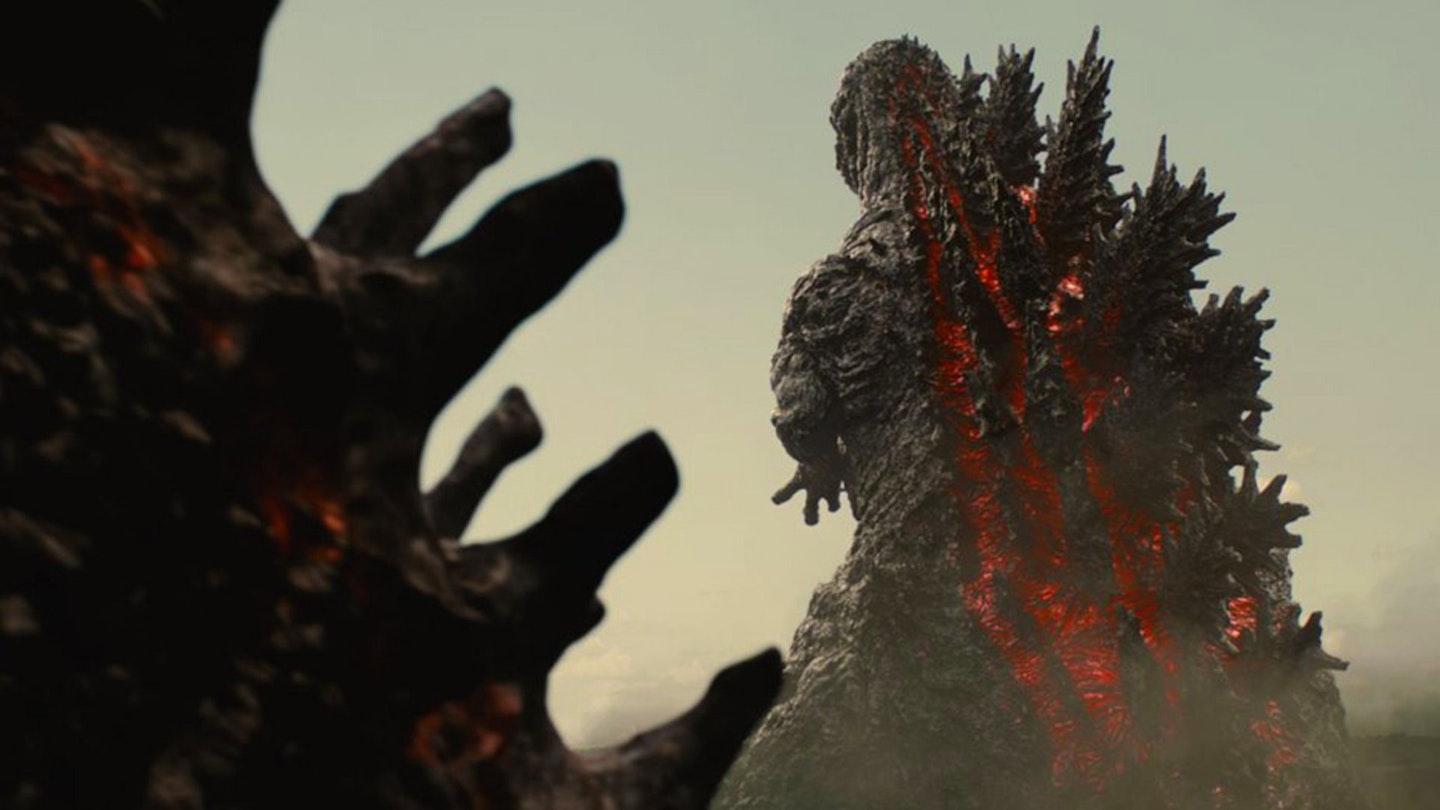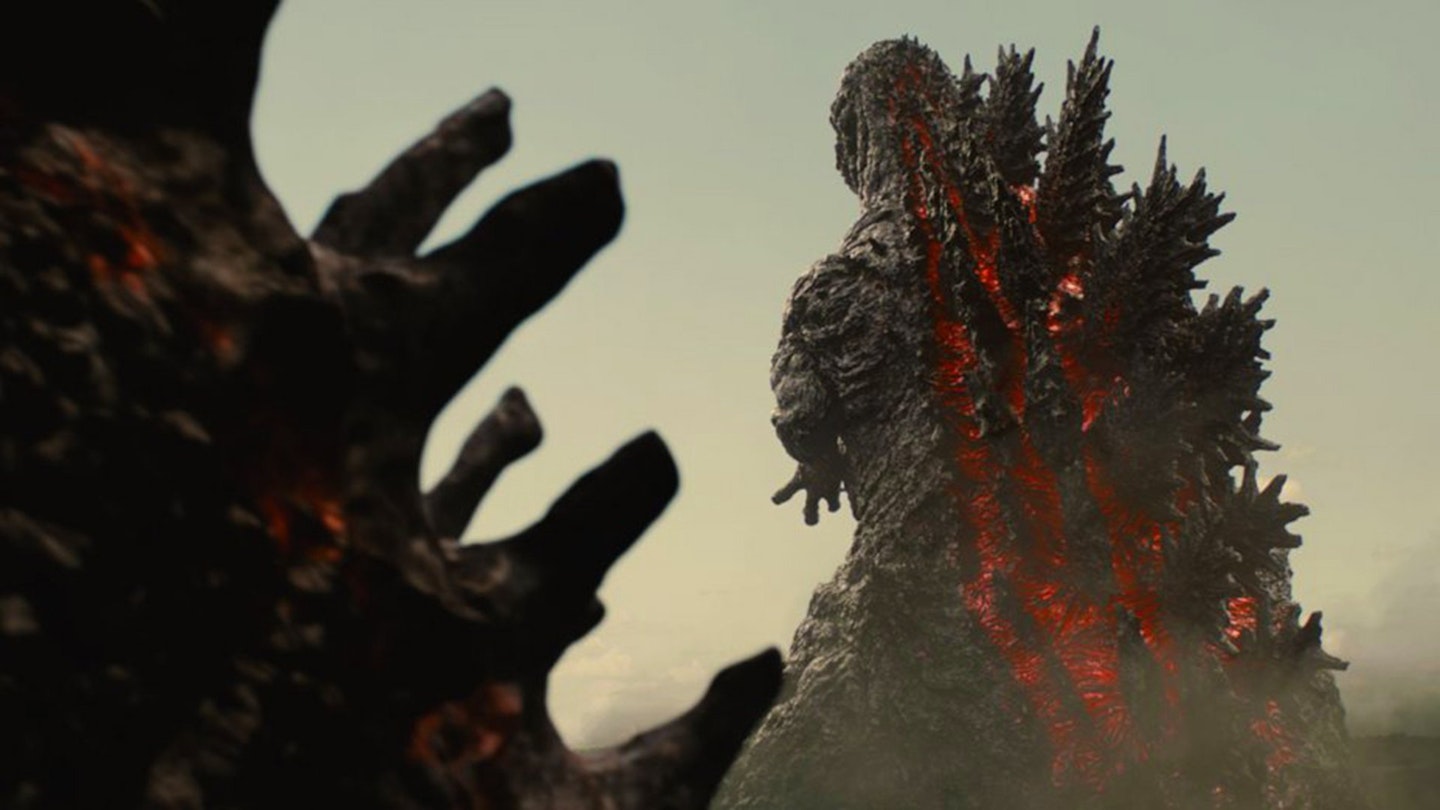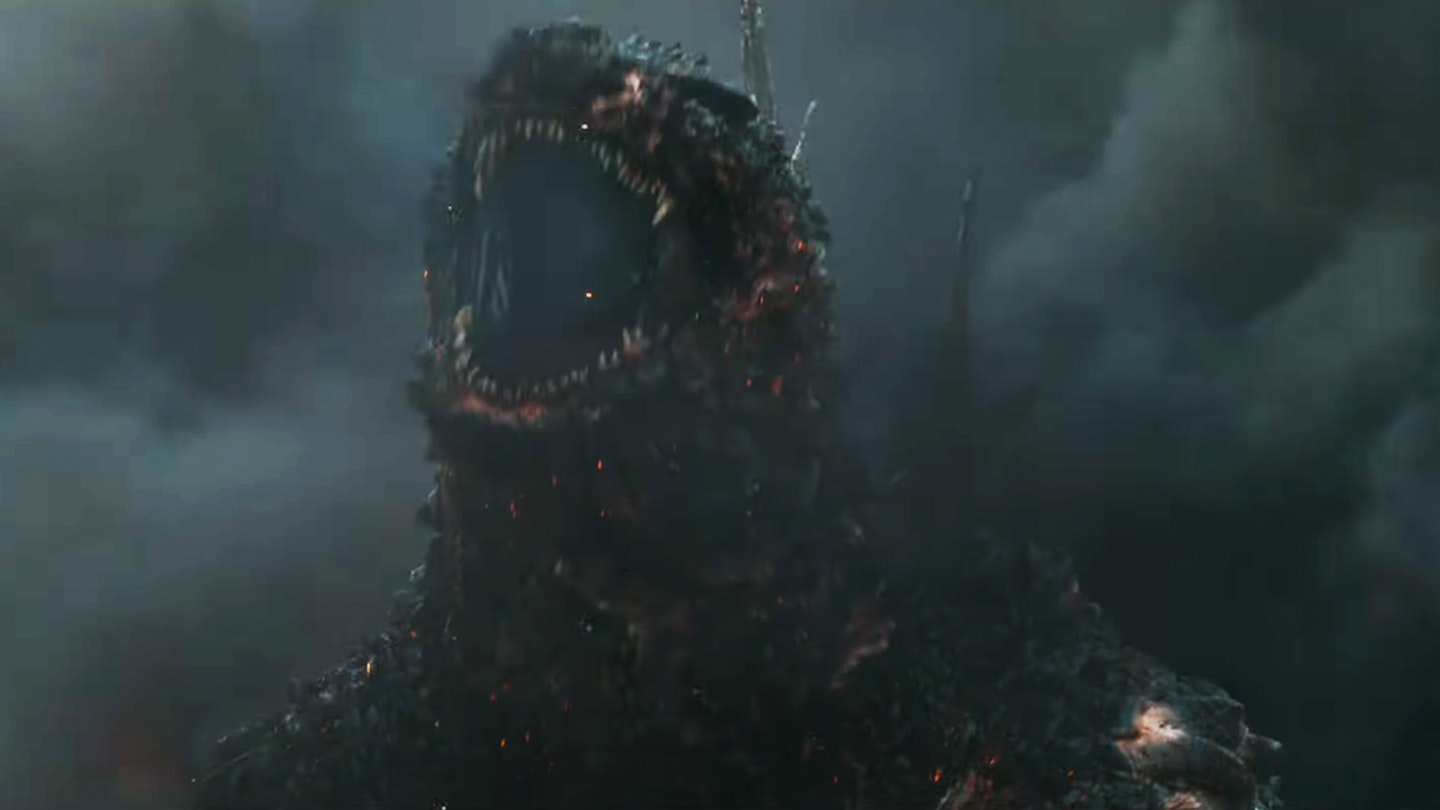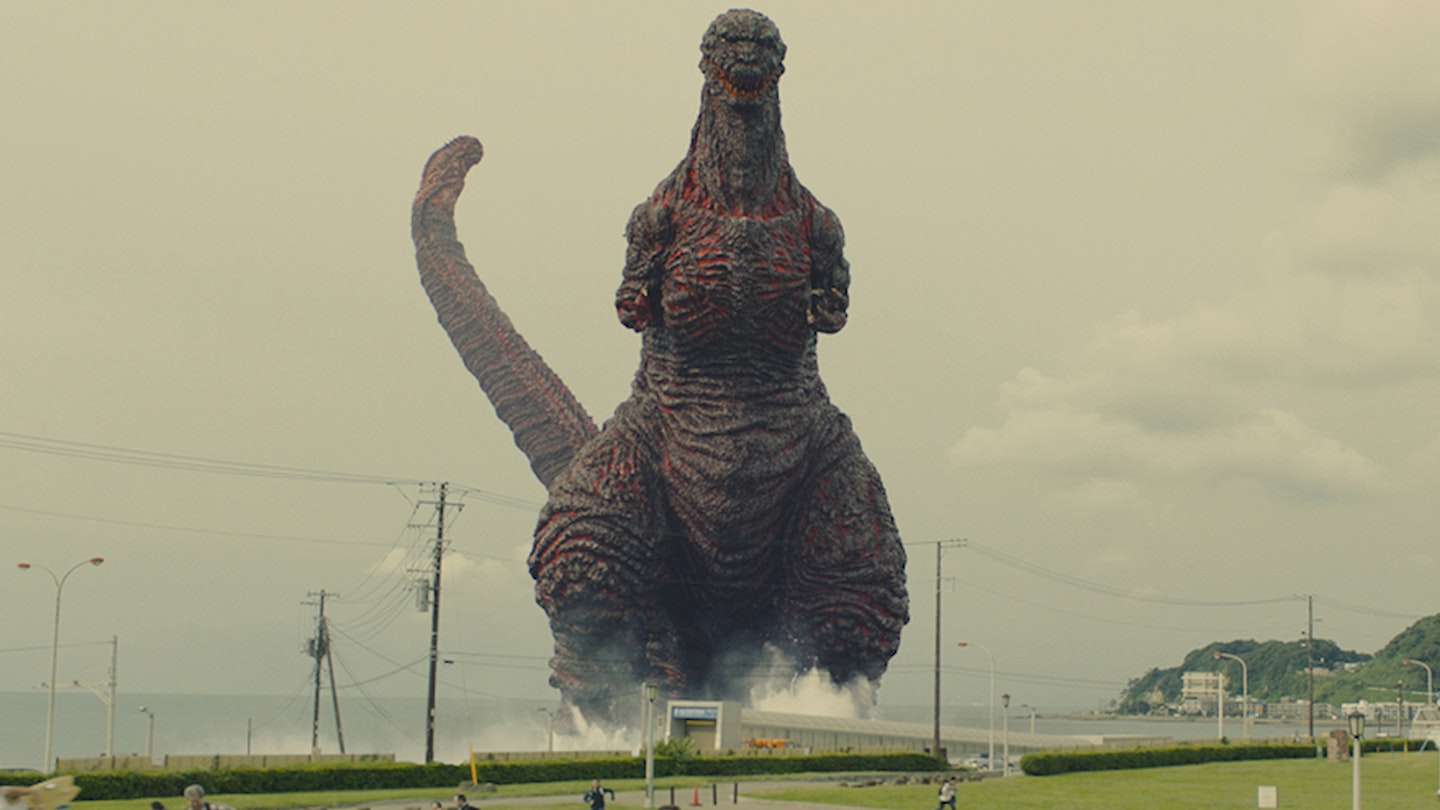Not to be outdone by Gareth Edwards’ 2014 Hollywood behemoth, Godzilla’s original Japanese studio, Toho, has now dusted off the towering kaiju for their own, home-grown reboot. Directed by Hideaki Anno (Neon Genesis Evangelion) and Shinji Higuchi (Gamera), the literally-translated "New" Godzilla gets off to a rip-roaring start, its monstrous star crawling from the sea in full reveal at the 15-minute mark and on its feet throwing the classic silhouette a mere 10 minutes later. A sometimes shonky mix of puppetry, model-work and performance capture, the creature is still awe-inspiring in its size and city-stomping, skyscraper-roasting fury. Sadly, it also wears itself out quickly and then goes to sleep for an hour.

Toho has rebooted Godzilla before, but this is the first time they’ve written Ishirô Honda’s original 1954 film out of its history. Back then the atomic monster represented a country still processing the horrors of Hiroshima and Nagasaki. This time it’s addressing the 2011 Tōhoko earthquake and tsunami and the Fukushima Daiichi nuclear disaster: the monster’s trail of destruction specifically recalls the imagery of those tragic events in the same way that Cloverfield and Man Of Steel queasily recall 9/11. The buffoonish inefficacy of the political and military establishment also explicitly satirises Japan’s own stunned, sluggish response to the triple-catastrophe. The cast of dithering government suits is enormous, with only Cabinet Secretary Yaguchi (Hiroki Hasegawa) getting anywhere near the role of traditional protagonist.
But despite the modern riffs, the shadow of Hiroshima still looms large. Satomi Ishihara’s Japanese-American liaison explicitly states that she won’t allow another bomb, even as the proposed US response to the threat is to nuke Tokyo and profit from the rebuilding (if Trump watched films with subtitles he’d probably be taking notes). The climax is a race against the clock, but one mostly confined to boardrooms. Impressively it remains compelling, but it’s an odd decision to remove Godzilla from its own movie for almost the entire second half. Perhaps the intended point, as one character puts it, is that man is the more frightening threat by far.



